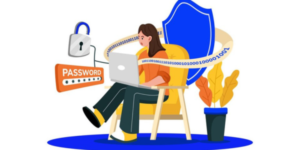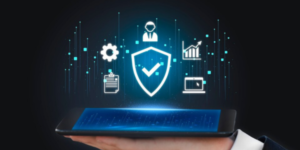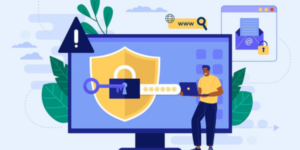27 Jul
The digital era of today has made small businesses more susceptible to cyberattacks. There are genuine risks involved, such as ransomware attacks and data breaches, which can have disastrous outcomes. But when it comes to cybersecurity, a lot of small business owners might feel overpowered or unclear of where to begin. This post will explain the fundamentals of cybersecurity in layman’s words and offer helpful advice on how to defend your small business from internet threats.
Recognising the Hazards
Priority one should be given to comprehending the risks that small businesses encounter in the digital sphere. Cybercriminals never stop changing their strategies, and no company is too small to fall victim to them.

Common Cyber threats include:

Phishing: This involves tricking individuals into providing sensitive information, such as passwords or credit card numbers, through deceptive emails or websites.
Ransomware: This type of malware encrypts files on your computer or network, rendering them inaccessible until a ransom is paid.
Malware: Malicious software designed to disrupt computer operations, gather sensitive information, or gain unauthorised access to systems.
Insider Threats: Employees or contractors who misuse their access privileges to steal data or sabotage systems.
Weak Passwords: Using easily guessable passwords or reusing the same password across multiple accounts can leave your business vulnerable to unauthorized access.

Keeping Our Systems Safe

Now that you are aware of the dangers, let’s talk about some easy actions you can take to protect the data and systems of your small business:
Maintain Software Updates: Make sure that your web browsers, operating systems, and software programmes are all updated on a regular basis. Security patches, which fix vulnerabilities found by developers or hackers, are frequently included in updates.
Employers should be urged to utilise strong, one-of-a-kind passwords for every account, and multi-factor authentication should be explored as an additional security measure.
Educate Staff: Provide training to your employees on how to spot and handle malware, phishing scams, and other typical online threats. Remind them never to download attachments from unidentified sources or click on dubious links.
Secure Our Wi-Fi Network: Change the default password on your router and use encryption (such as WPA2) to protect your wireless network from unauthorized access. Consider setting up a separate guest network for visitors.

Back Up Our Data: Regularly back up our important files and data to an external hard drive or cloud storage service. In the event of a ransomware attack or hardware failure, we will be able to restore our files and minimise downtime.

Implement Access Controls: Limit employee access to sensitive data and systems based on their job responsibilities. Regularly review and update user permissions to ensure that only authorized individuals have access to critical information.
Protect Your Website: If your company has a website, make sure HTTPS encryption is in place and the website is hosted on a secure server. Update your plugins and content management system frequently, and do a malware and vulnerability scan.

Plan for Incidents: Develop a cybersecurity incident response plan that outlines steps to take in the event of a breach or other security incident. Assign roles and responsibilities, and practice your response procedures regularly.
Conclusion
In today’s linked world, cybersecurity is a major concern for small businesses. You can defend your company from online threats and lower the possibility of data breaches or other cyber incidents by being aware of the risks and putting basic security measures in place. Recall that cybersecurity is a continuous endeavour, so exercise caution and maintain your online safety.
